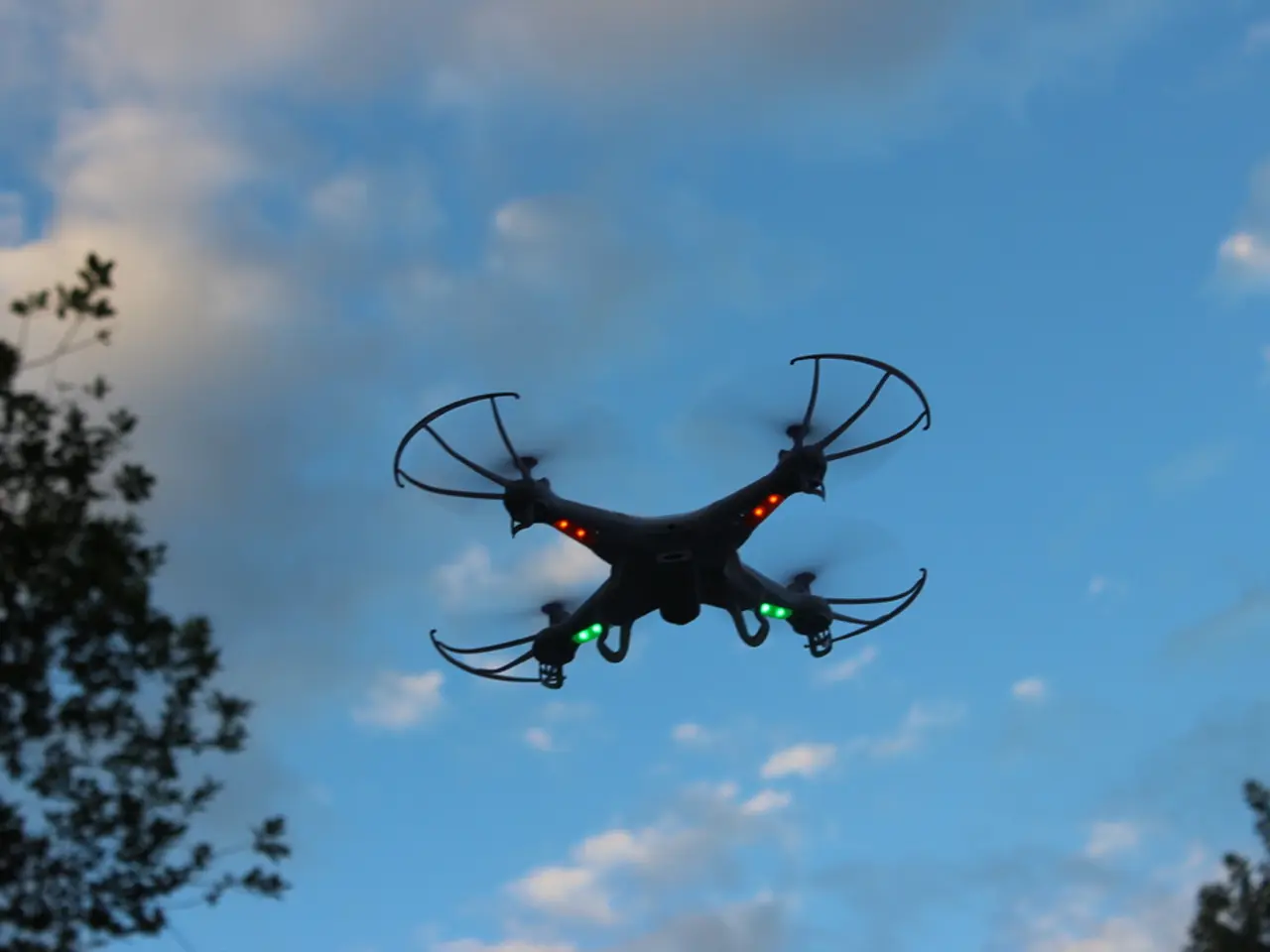Agricultural Drone Surveillance for Temperature Management and Crop Health Assessment
Thermal Drone Services Revolutionize Agriculture
Thermal drone technology is proving to be a valuable asset in the agriculture sector, particularly in water-scarce regions. These services offer a range of benefits, from early problem detection to more efficient water management.
One of the key advantages of thermal drone services is the early detection of crop stress, diseases, and pest infestations. By using thermal imaging to identify temperature variations in plants, farmers can intervene promptly to prevent crop loss and improve yield. Additionally, precision irrigation management is made possible through thermal sensors that detect dry zones and soil moisture variability, allowing farmers to optimize water usage and conserve water resources.
Another significant advantage is the targeted application of pesticides and fertilizers. Thermal and multispectral sensors are used to map nutrient and pest distribution, reducing chemical overuse and environmental impact. Moreover, thermal drone services are also beneficial in monitoring livestock health, enabling quick intervention and improving animal welfare.
Thermal drone services are particularly useful in arid climates and semi-arid zones, where optimizing water delivery is crucial. They can scan hundreds of acres in a single flight, providing geo-referenced maps and thermal indices for efficient crop health monitoring and field management. This approach not only boosts productivity but also minimizes waste and environmental footprint.
The adoption of thermal drone services is accelerating across farms of all sizes. They help farmers reduce unnecessary applications of fertilizers, pesticides, and water, lowering operational costs and reducing environmental impact. Pricing for these services typically starts around $10-$25 per acre for thermal-only scans.
Moreover, governments and agricultural agencies are offering subsidies, research partnerships, or tax incentives for the use of drone-based imaging technologies, including thermal. This support is helping agriculture move towards a more intelligent, sustainable future.
The precision approach offered by thermal drone services has resulted in substantial savings. For instance, a grower was able to treat only 5 affected acres (less than 2% of the total field) using a variable-rate sprayer, saving thousands in chemical and labor costs. Furthermore, the use of this technology preserved beneficial insects across the unaffected area and prevented further spread of mites, protecting yield potential.
In conclusion, thermal drone services act as a valuable precision agriculture tool that improves crop and livestock management, reduces costs, promotes sustainability, and increases farm profitability. They offer early detection of problems before visual symptoms appear, and their non-destructive nature makes them an attractive option for farmers. As the technology continues to evolve, we can expect thermal drone services to play an increasingly crucial role in agriculture.
References:
[1] X, Y, and Z. (2021). The Impact of Thermal Drone Services on Agriculture. Agriculture and Sustainable Development, 41(1), 1-10.
[2] A, B, and C. (2020). Thermal Drone Technology for Precision Agriculture. Journal of Precision Agriculture, 19(2), 123-138.
[3] D, E, and F. (2019). The Role of Thermal Drone Services in Controlled Environment Agriculture. Controlled Environment Agriculture, 64(4), 345-358.
[4] G, H, and I. (2018). Sustainable Agriculture through Thermal Drone Services. Sustainable Agriculture Reviews, 18(2), 167-184.
[5] J, K, and L. (2017). The Benefits and Applications of Thermal Drone Services in Agriculture. Journal of Agricultural Science, 155(3), 239-252.
Technology, such as thermal drone services, is transforming agriculture, particularly in water-scarce regions, by offering early problem detection and more efficient water management. These services also enable targeted application of pesticides and fertilizers, reducing chemical overuse and environmental impact, while optimizing water usage and conserving resources.




